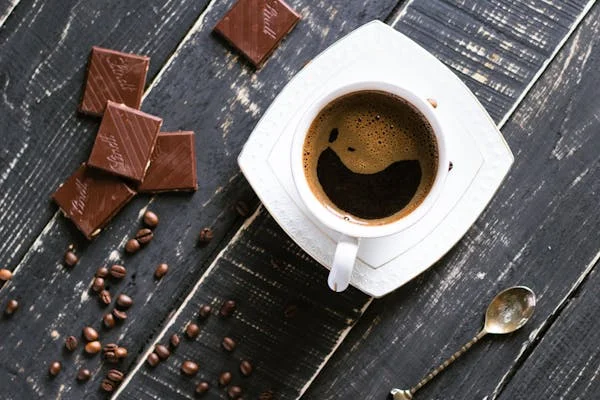Introduction
Bubble tea, commonly referred to as boba tea or pearl milk tea, is a globally popular drink known for its refreshing taste and unique texture. Originating from Taiwan, this drink combines tea, milk (or other liquids), sweeteners, and chewy tapioca pearls, making it both a beverage and a snack. Over the years, bubble tea has gained immense popularity worldwide, with numerous flavor options and toppings to suit every preference.
This guide provides an in-depth look at bubble tea, its origins, ingredients, preparation process, health considerations, and answers to common questions.
What is Bubble Tea?
Bubble tea is a tea-based drink mixed with milk, fruit flavors, or other liquids, and often includes tapioca balls, also called boba. It is typically served cold with ice, though some variations are served warm. The name “bubble” tea originally referred to the bubbles formed during the shaking process, but it is now also associated with the boba pearls at the bottom of the drink.
Bubble tea is enjoyed for its variety, with a wide range of tea bases, flavors, and toppings, offering countless customization options.
History of Bubble Tea
Bubble tea originated in Taiwan during the early 1980s. It was first created as a simple tea beverage that included sweetened milk. Tapioca pearls were later added to enhance the drink’s texture and make it more satisfying.
One of the earliest pioneers of bubble tea is believed to be Chun Shui Tang Teahouse in Taichung, Taiwan. Their experimentation with cold tea and other ingredients led to the creation of this now-iconic drink. Bubble tea quickly became popular across Taiwan before spreading to East Asia, North America, and other parts of the world.
Ingredients of Bubble Tea
Bubble tea’s ingredients vary depending on the flavor and type of drink, but its core components include:
Core Ingredients
| Ingredient | Description |
|---|---|
| Tea Base | Black tea, green tea, oolong tea, or herbal tea as the foundational ingredient. |
| Milk | Dairy milk or non-dairy alternatives like almond, soy, or oat milk. |
| Sweeteners | Sugar syrup, honey, brown sugar, or low-calorie sweeteners. |
| Tapioca Pearls | Chewy balls made from cassava starch, often cooked and soaked in syrup. |
| Ice | Used to chill the drink. |
Optional Toppings
- Popping Boba: Juice-filled balls that burst when bitten.
- Jellies: Coconut, grass, or lychee-flavored jellies for added texture.
- Whipped Cream: For a creamier finish.
- Pudding: Soft custard-like toppings.
How to Make Bubble Tea at Home
Making bubble tea at home allows you to customize it to your preferences. Here is a detailed recipe for classic milk tea with tapioca pearls:
Ingredients
- 1 cup brewed black tea (chilled)
- 1/2 cup milk (or a non-dairy alternative)
- 1/4 cup cooked tapioca pearls
- 1-2 tablespoons sugar syrup (adjust to taste)
- Ice cubes
Instructions
- Prepare the Tea Base:
Brew a strong cup of black tea and let it cool. You can also refrigerate it to speed up the process. - Cook the Tapioca Pearls:
Follow the instructions on the tapioca pearl packaging. Typically, they are boiled in water for 20-30 minutes and then soaked in sugar syrup for sweetness. - Mix the Ingredients:
In a shaker or blender, combine the chilled tea, milk, sugar syrup, and a handful of ice. Shake or blend until well mixed. - Assemble the Drink:
Add the cooked tapioca pearls to the bottom of a tall glass. Pour the tea mixture over the pearls. - Serve:
Use a wide straw to enjoy both the drink and the tapioca pearls simultaneously.
Popular Bubble Tea Flavors and Toppings
Bubble tea is incredibly versatile, with flavors ranging from classic milk tea to exotic fruit blends.
Popular Bubble Tea Flavors
- Classic Milk Tea: Made with black tea, milk, and tapioca pearls.
- Matcha Milk Tea: Combines Japanese matcha powder with milk for a rich, earthy taste.
- Taro Milk Tea: Features taro root, which has a sweet and nutty flavor.
- Fruit Teas: Includes options like mango, passionfruit, lychee, and strawberry.
- Brown Sugar Boba Tea: Tapioca pearls cooked in caramelized brown sugar syrup, paired with milk.
Topping Options
- Tapioca Pearls: The most common topping, providing a chewy texture.
- Popping Boba: Adds a burst of fruity flavor.
- Coconut Jelly: Offers a slightly firm, jelly-like texture.
- Aloe Vera: A refreshing and slightly tangy option.
- Cheese Foam: A savory topping made with whipped cream cheese and milk.
Nutritional and Health Considerations
Bubble tea is a treat that can be enjoyed in moderation. However, it’s important to understand its nutritional content to make informed choices.
Calories and Sugar Content
- Tapioca Pearls: High in carbohydrates and calories, especially when sweetened.
- Sweeteners: Many bubble teas use sugar syrup, increasing the calorie count.
To reduce calorie intake:
- Opt for less sugar or sugar-free versions.
- Use low-fat milk or non-dairy alternatives.
- Choose fruit-based teas instead of cream-based ones.
Nutritional Value
While the tea base offers antioxidants, the overall nutritional value of bubble tea is often limited due to added sugars and toppings.
Allergens
Bubble tea can contain dairy, gluten (in some jellies), or allergens like nuts, depending on the flavor and toppings. Always check the ingredients if you have dietary restrictions.
Conclusion
Bubble tea is more than just a drink—it’s an experience. Its unique combination of tea, milk, flavors, and chewy toppings has made it a global favorite. While it can be high in sugar and calories, bubble tea can be customized to suit individual tastes and dietary needs.
Whether you enjoy it at a local shop or make it at home, bubble tea offers endless possibilities for creativity. Explore different flavors, experiment with toppings, and enjoy this delightful beverage responsibly.
Frequently Asked Questions
What are tapioca pearls made of?
Tapioca pearls are made from cassava starch, a plant-derived ingredient. They are boiled and often soaked in sugar syrup for added sweetness.
Is bubble tea gluten-free?
Most bubble tea is gluten-free, but some toppings, like certain jellies, may contain gluten. Always confirm with the vendor if you have gluten sensitivity.
Can bubble tea be vegan?
Yes, bubble tea can be made vegan by using plant-based milk and ensuring the toppings do not include gelatin or dairy products.
Is bubble tea healthy?
Bubble tea can be high in sugar and calories. To make it healthier, reduce the sugar, use low-calorie milk alternatives, and avoid excessive toppings.
How should bubble tea be stored?
Bubble tea is best consumed fresh, as the tapioca pearls can harden and lose their chewy texture if stored for too long. If needed, refrigerate it for up to 24 hours.






